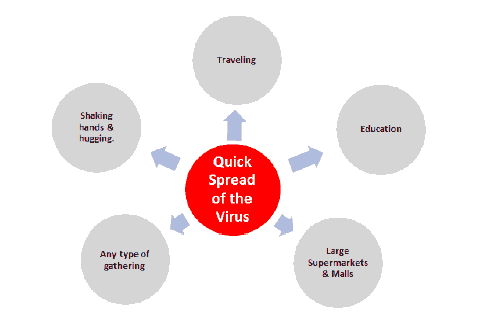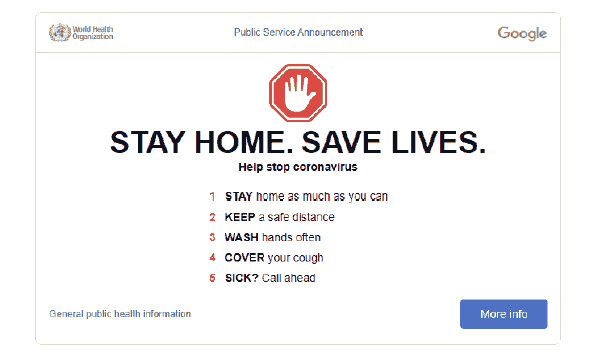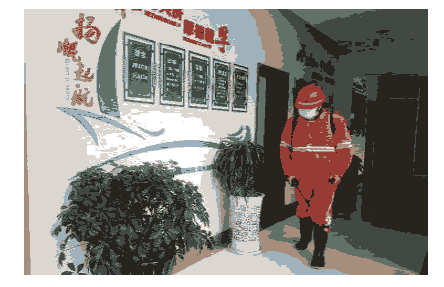Research Article: 2021 Vol: 24 Issue: 1S
Lean Manufacturing Application to Control the Spread of the Covid-19
Abdelhakim Abdelhadi, Prince Sultan University
Keywords:
Lean Manufacturing, COVID 19, Healthcare, World Health Organization
Abstract
Methodology: Since January of 2020, the world has been going through a crisis that called coronavirus (COVID-19) and in March, 2020, COVID-19 has become a pandemic. Coronavirus disease (COVID-19) is an infectious disease caused by a new virus. The strong danger posed by the COVID-19 is the significant speed of its spread, which leads to major problems in the large number of infected people versus the lack of hospitals. COVID-19 caused a lot of losses for everyone including money, lives, and time. It’s difficult to control the spread of the COVID-19 especially for the countries where COVID-19 has already been spread. Governments and World Health Organization (WHO). Work together to reach the best precautionary measures that would prevent the spread of the COVID-19 and enable governments to control it.
Purpose: In this research, some of Lean Manufacturing tools and concepts will be used to control and limit the spread of COVID-19.
Findings: This research introduced some major Lean manufacturing principles and illustrates that these principals can be applied in to help in overcoming pandemic that the world is facing now. In such a disaster, people should use every single tool that could help them in order to overcome such a problem. By applying lean manufacturing to this pandemic, we will reduce the number of spread between.
Originality: This research is original and based on solid literature review.
Introduction
Lean manufacturing is a systematic approach to eliminate non-added value to the system under consideration (Coronado, 2002). Lean is a continuous improvement approach, with the aim of eliminating waste and any non-value-added activities by targeting the steps that do not add value to the customer/ patient such as avoidable interruptions, delays and mistakes to improve the process flow. Lean manufacturing is; therefore, a quality improvement tool which can significantly enhance service quality and efficiency. Lean manufacturing implies a unified, comprehensive set of philosophies, rules, guidelines, tools and techniques for improving and optimizing a production system. While lean was issued in a large volume, the repetitive manufacturing setting within the automotive industry sector, its principles, can almost be applied to all processes (e.g., health care, service industries, high technology enterprises, sales and marketing and fast-food providers) (Das, 2006). How Toyota and their suppliers applied the lean manufacturing concept was studied and popularized within the book The Machine that Changed the World (Das, 2005). The authors concluded that the basic idea of lean is attractively simple in that the organization should be obsessively focused on the most effective means of producing value for their customers. An organization which has lean approaches this challenge by applying five basic lean principles, with a focus on understanding waste within its systems. It recognizes the value of its work, the importance of staff training and their role within improvement teams to bring about change (Maleki et al., 2019). The five lean principles to be applied are as follows: (1) Specify what customers value most – Value is what the customer wants and expects. This requires a precise understanding of the specific needs of the customer; (2) Understand the value stream – The value stream is the activity that when done correctly and in the right order, produces the results (a product or level of service) that the customer values; (3) Improve the flow – A lean organization work should flow steadily and without interruption from one value-adding activity or its supporting activity to the next activity; (4) Pull – The system should be able to readily respond to customer demand, in other words, the customers pull the work through the system; (5) Perfection – Having implemented the first four principles, the organization will understand the system ever better and from this be able to generate ideas for further improvement. A lean system becomes leaner and faster and its waste becomes easier to identify and eliminate. A perfect process delivers the exact amount of value to the customer. Each step within the process is value adding, capable (producing a good result every time), available (producing the desired output and the desired quality every time), adequate (free of delays), highly flexible and is continuous in its operation. If one of these factors fails, some waste is produced. This research attempt to use lean manufacturing to minimize the spread of corona virus epidemic by using some of lean manufacturing concepts (Liker, 2004; Maleki et al., 2019: Abdul et al., 2020; Womack et al., 1990).
Problem
Let’s consider that our main problem is the virus quick spreading and see it as a network or a center of a circle and we want to break up everything that is attached to the central problem which is the spreading of the virus. Those things are the main issues that the virus spread through which are:
1. Traveling.
2. Education (Schools & Universities).
3. Large Supermarkets & Malls.
4. Any type of gathering that includes a lot of people.
5. Shaking hands & hugging.
Those are the corners of the network that we need to cut them in order to prevent the spreading of the virus (Figure 1).
Proposed Solutions
Locally
1. People should hold the responsibility and be aware of every single thing that could enable the spreading.
2. People should take care of not only themselves, but also of their families, friends, and neighbors.
3. Gatherings should be prohibited at all in order to cut this spread and reduce the number of cases.
4. Shops and restaurants should be contacted online, and the order is delivery. The car and the delivery man should be well sterilized after each order.
5. Although online classes that keep students continue their learning normally without any lateness.
6. Hospitals should not accept people unless it is emergency case.
Globally
1. Airports should be totally closed in order to well siege the cases and prevent it from spreading.
2. Trading lines should be well maintained through cellular contact and the trucks, airplanes, or ships that are shipping the merchandises should be well sterilized.
3. In order to avoid a high drop in the economy of the world, a little people should continue the work they should be aware and try as much as possible to work from home.
4. United we stand alone we fail, scientists all over the world should form teams share their information in order to find a medicine for such a virus.
5. All the countries should be updated every 24 hours about the total cases in each country and their status in order to let countries give hand and help to each other.
Methods: Lean Approach And Its Applications To The Current Situation
In this section, 15 different lean pillars will be presented and their application to minimize the spread of the virus will be shown:
5S
5S is an important tool in improving an organization’s physical working environment as well as culture. 5S stands for Sort, Set in order, Sweep (Systematic cleaning), Standardize, and Sustain. 5S outlining a mechanism for attaining a safe, clean, uncluttered, and comfortable environment, and one capable of inspiring productivity Being a powerful framework for changing and reinforcing positive, impactful behavior in an organizational setup, 5S can be used to minimize the risk of exposure to the COVID-19. Given that keeping the workplace clean and well organized is the central tenet of 5S, during this COVID-19 season, maintaining cleanliness by using all precautionary and preventive measures will minimize employee exposure to the virus causing this epidemic, saving organizations lost workdays, expenses for covering medical care for any affected employees and their families, and improving the overall productivity of the organization. Therefore, the 5S method is important in not only stemming COVID-19 infections, but also enhancing the efficiency and the bottom line of an organization.
Value Stream Mapping
Being a process that is based on team effort, value stream mapping entails the creation of value stream maps for business processes. The value stream map represents the flow of materials and information. This mapping of the flow of material and information across the entire supply chain spectrum allows an organizational management to see at once where there are delays in the chain, and any excesses or restraining aspects affecting inventory in order to take the necessary steps to rectify and improve the process for efficiency. But that is the classic purpose of VSM at least before the appearance of the COVID-19. To help stop the spread of the COVID-19 in its tracks, VSM can let the management view wherein the inventory processes the goods are at the highest risk of contamination and put the necessary measures to ensure that that does not happen.
Standardized Work
As an integral part of just-in-time manufacturing processes, standardized work as a tool aims to enable an organization to attain a balanced workflow, acceptable cycle time, and high-quality work by enabling an organization to standardize its operations to attain consistency along with efficiency. The key objective is to explicitly communicate to the employees working on a business line on how to perform a given job. To stop the spread of the COVID-19, it is imperative to develop clear guidelines on how to disinfect oneself, the operational tools and machines, and how to ensure the most hygienic conditions and products in the production line to ensure that products and services do not become means of aiding the transmission of the virus.
Load Leveling
This is a lean mechanism that aimed at the reduction of waste by minimizing large consumer demand fluctuations. It is imperative to take calculated and measured steps by ensuring a consistent volume and product level to ensure quality. This tool can be applied in controlling the spread of the COVID-19 by ensuring a consistent level of production such that all necessary precautions are taken into consideration including sanitization and precautionary measures to ensure the spread of the COVID-19 is not aided in the production line by rushing to fulfill high, temporal fluctuations in consumer demand of goods or services, an undertaking likely to jeopardize all hygiene measures.
Kaizen
Kaizen is a lean tool that simply refers to an ongoing and continuous improvement of work processes, practices, and personal effectiveness through identifying and eliminating waste. This method is founded on five elements namely personal discipline, quality circles, teamwork, improved morale, and suggestions for improvement. This method can be used to stop the spread of the COVID-19 by accommodating suggestions in the production process for ensuring maximum health standards. For instance, a key guideline to ensure that COVID-19 does not spread in the workplace is to ensure that the workroom is clean and hygienic. Therefore, the Kaizen tool can be used to improve hygiene and cleanliness in the workplace.
Kanban
Kanban is a Japanese word that stands for signboard (Liker, 2004). Kanban is a scheduling system, it is a mechanism for helping workers visualize their work, attain the optimal efficiency, and remain agile. Using this system, production is based on customer demand (Pull system), as opposed to producing goods and pushing them to the market through aggressive marketing tactics. One of WHO’s recommendations aimed at curbing the spread of the COVID-19 is to reduce trips as possible as part of social distancing measures, and when completely necessary, employees ought to consult the national travel advisory. Therefore, manufactures should only stick to the production of necessary goods to minimize business trips and other related interactions to help in the reduction of the spread of the disease.
Visual Workplace
The visual workplace entails strategic placement of information in the appropriate place where the relevant employees can see it, creating a basis for continuous improvements by displaying guidelines that are visible, understood, and easily adhered to. One of the key methods that the World Health Organization is using to ensure the public is well aware of the ways to stop the spread of the COVID-19 is to use visual charts and information as shown in the Figure 2. An organization can place these charts and similar ones to ensure employees follow the guidelines to minimize the spread of the disease.
Quick Changeover
As a lean mechanism geared toward the reduction of manufacturing costs by increasing production efficiency, quick changeover entails practices such as reducing the amount of time needed to switch from one piece of production equipment to another, and among other measures, meet customer needs by increasing on-time delivery. Although this method may not be used to explicitly curb the spread of the COVID-19, it can be used as a part of corporate social initiatives by providing essential goods to vulnerable groups cheaply.
Andon
This is a system designed to alert supervisors or managers within a production line of problems that occur there, all in real-time to ensure that corrective actions are taken instantaneously. This method can be used to stem the spread of the COVID-19 by alerting the management of any breach of hygiene precautions to ensure maximum cleanliness is maintained throughout the production process to ensure goods are not contaminated hence posing the risk of spreading the COVID-19.
Poka-Yoke
Poka-Yoke is a mistake-proofing approach for improving production processes by employing any mechanisms that help an operator avoid mistakes. This method can be used to help curb the spread of the COVID-19 by putting measures such as automatically stopping the production process when an employee is in the production line without complying with the precautionary measures which could expose goods to the virus which might end up with exposing the consumers to the virus.
One-Piece Flow
One-piece flow entails moving a single workpiece at a time between adjacent operations within a process environment as opposed to moving an entire batch. Covid-19 prevention guidelines stipulate a distance of at least one meter between individuals. This method can aid in the prevention of COVID-19 within the workplace by ensuring that only one employee is within the process step, ensuring that the physical distance is maintained.
Cellular Manufacturing
A cell in this context refers to a small unit within a larger production facility that produces a specific set of parts that can then be used to produce a machine or another part. This allows workers to keep distance from others, effectively helping curb the spread of the COVID-19.
Quality at Source
This principle anchored on the idea that quality is not determined from the end product but throughout the production process by ensuring that at each stage, every individual who is responsible for it does their part to attain quality output and timely product or service delivery. This method can be used to prevent the spread of COVID-19 by ensuring that every employee complies with the necessary hygiene measures, therefore eliminating the spread of the disease.
The Figure 3 is an example of precautionary measures that employees must comply with.
Preventive Maintenance
Preventive maintenance entails regularly servicing an equipment piece to ensure that it remains operational as long as possible. This method can be used to ensure there is minimal spread of COVID-19 by regularly sanitizing the production floor and machines to ensure that any contamination is arrested and prevented from spreading further. Figure 4, shows a preventive measure to prevent the spread of the virus, which is considered one of lean pillars.
Group Technology
Group technology (GT) is a mechanism used in manufacturing that groups similar tasks together to save time, avoid duplication, and ease information retrieval. This method can be used to prevent the spread of COVID-19 by grouping together hygiene functions to ensure that time is saved while undertaking them.
Conclusion
If these concepts are achieved and adhered to, there will be a significant decrease in the number of people infected with the virus, as well as no interruption of food or medical production materials. This research introduced some major Lean manufacturing principles and illustrates that these principals can be applied in to help in overcoming pandemic that the world is facing now. In such a disaster, people should use every single tool that could help them in order to overcome such a problem. By applying lean manufacturing to this pandemic, we will reduce the number of spread between.
Acknowledgment
The author would like to acknowledge the support of Prince Sultan University for paying the Article Processing Charges (APC) of this publication.
References
- https://www.who.int/docs/default-source/coronaviruse/getting-workplace-ready-for-covid-19.pdf.
- Coronado, R.B., & Antony, J. (2002). “Critical success factors for the successful implementation of Six Sigma projects in organizations”. The TQM Magazine, 14(2), 92-9.
- Das, N., Gauri, S., & Das, P. (2006). “Six Sigma principles in marketing – an application”. International Journal of Six Sigma and Competitive Advantage, 2(3), 243-62.
- Das, P. (2005). “Reduction in delay in procurement of materials using Six Sigma philosophy”. Total Quality Management and Business Excellence, 16(5), 645-56.
- Liker, J.K. (2004). The Toyota way. NY: McGraw Hill.
- Abdul, A.I., Che, A.M.N., & Kamaruddin, S. (2020). Solving production bottleneck through time study analysis and quality tools integration. The International Journal of Industrial Engineering: Theory, Applications and Practice, 27, 13-27.
- Maleki, V.B., Niaki, S., Khorram, E., Farhangi, M. (2019). A bi-objective inventory model to minimize cost and stock out time under backorder shortages and screening. The International Journal of Industrial Engineering: Theory, Applications and Practice.
- Womack, J.P., & Jones, D.T. (1996). Lean thinking. New York, NY: Simon and Schuster.
- Womack, J.P., Jones, D.T., & Roos, D. (1990). The machine that changed the world. New York, NY: MacMillan Press.



